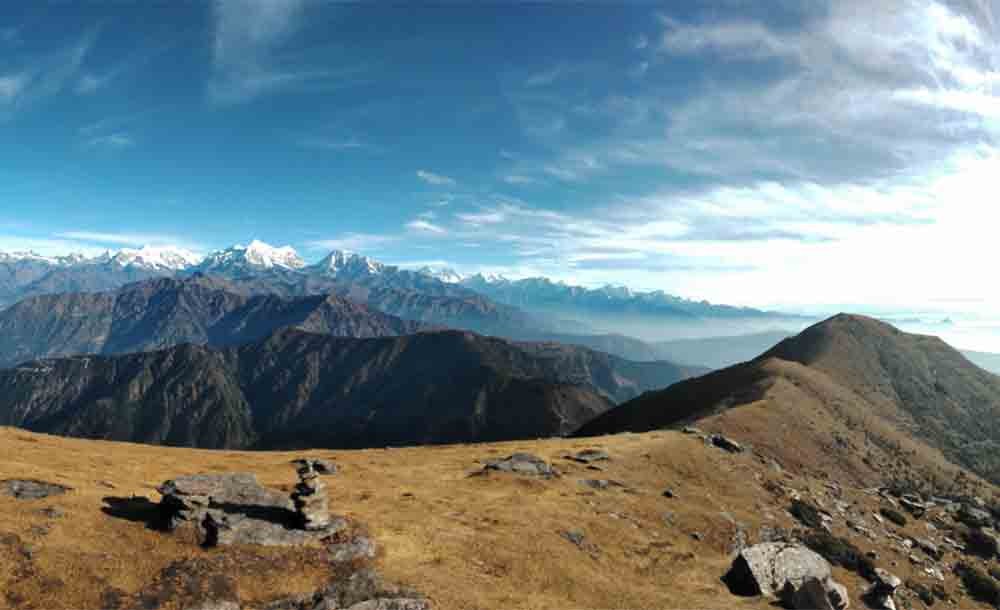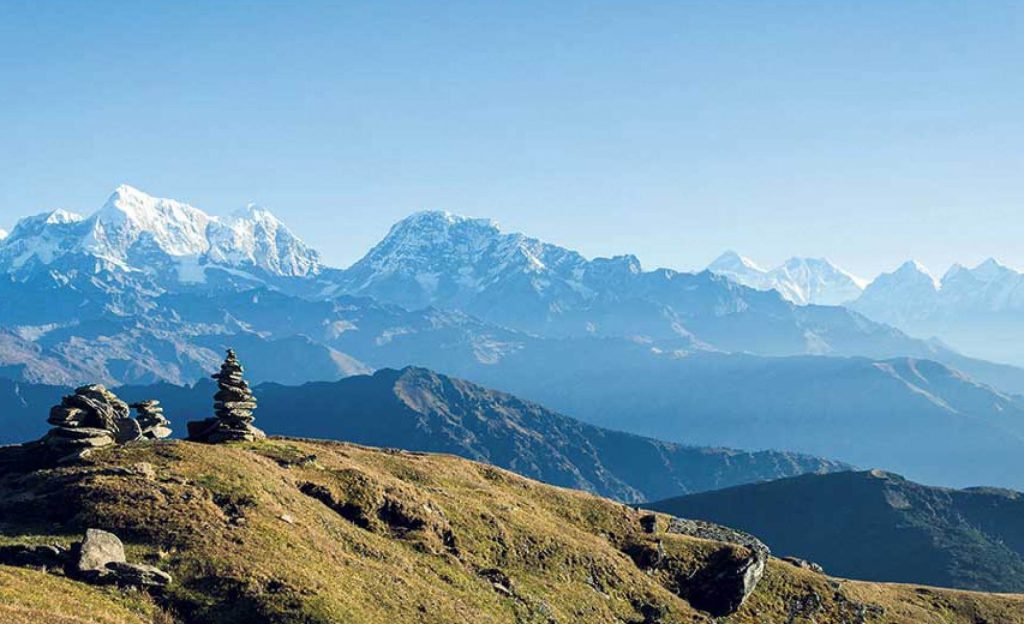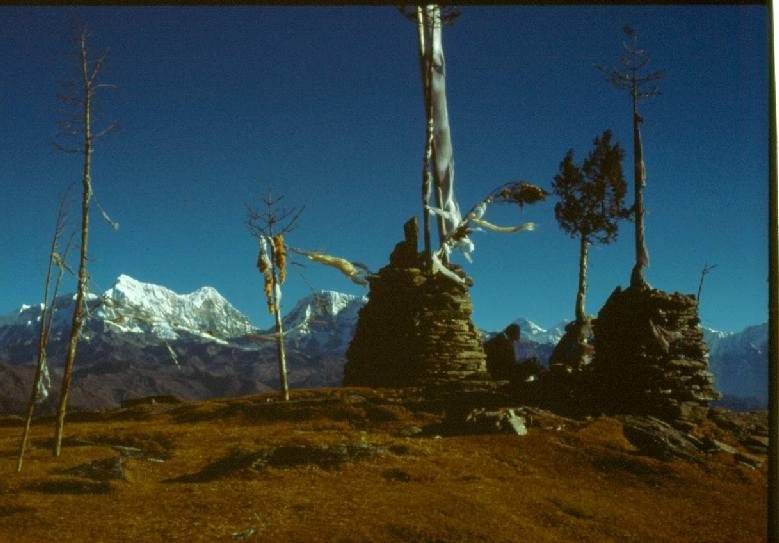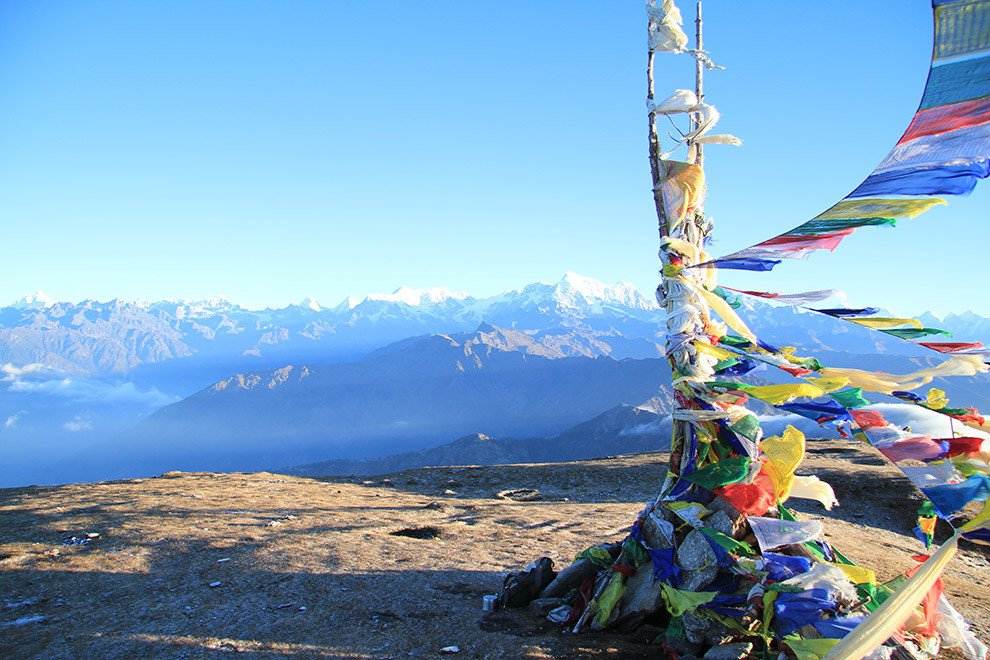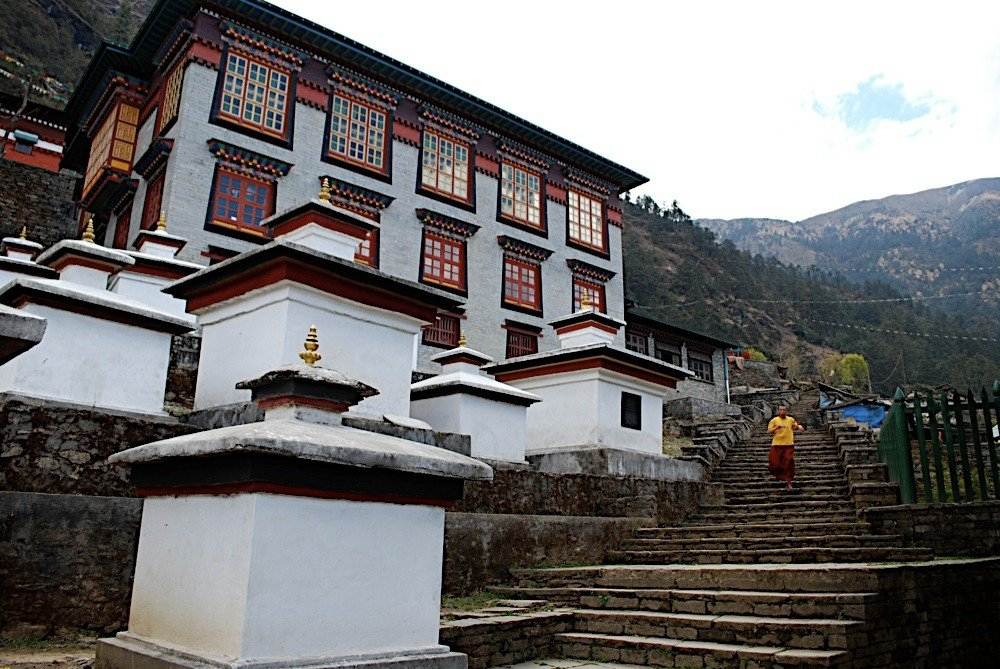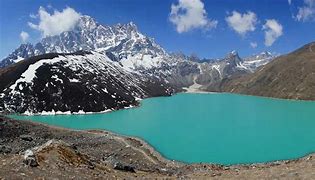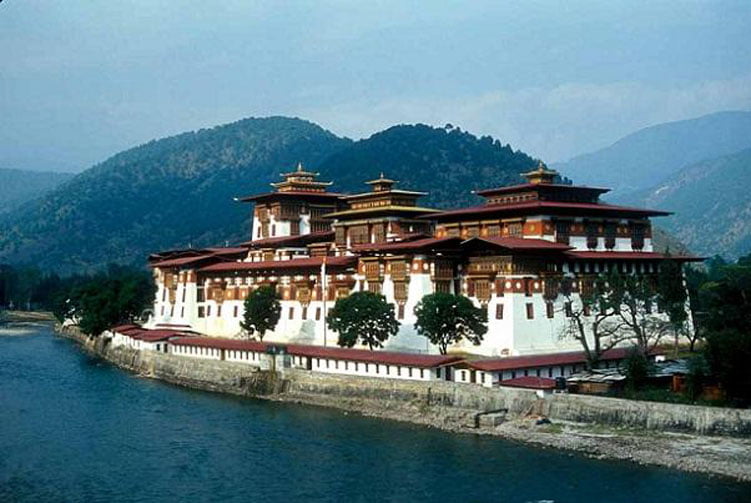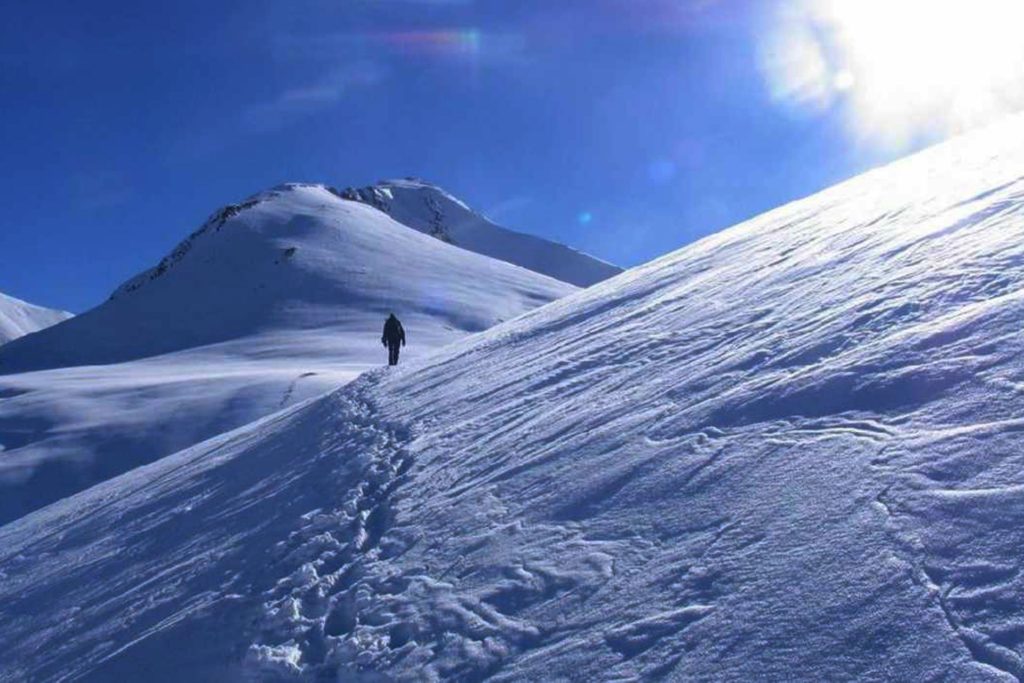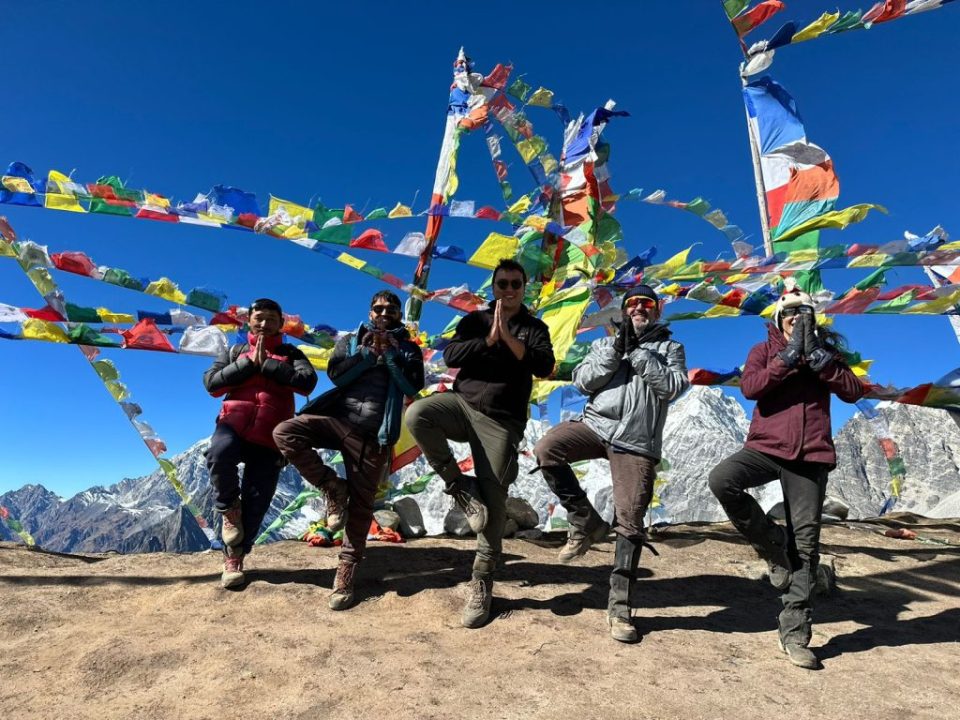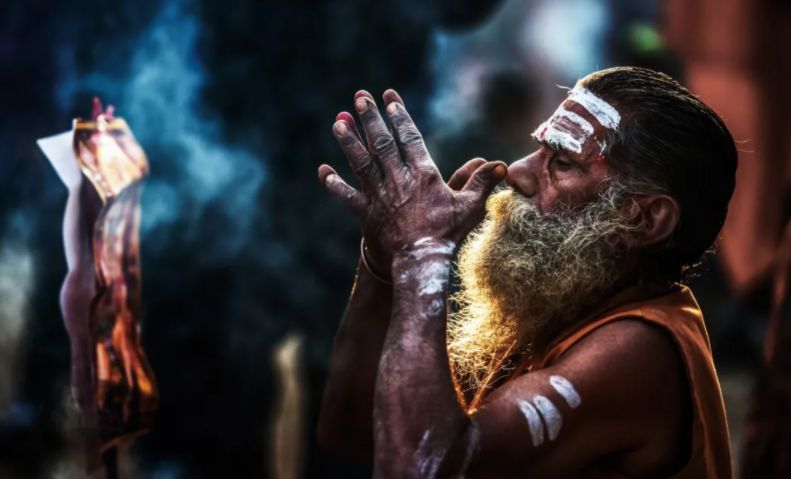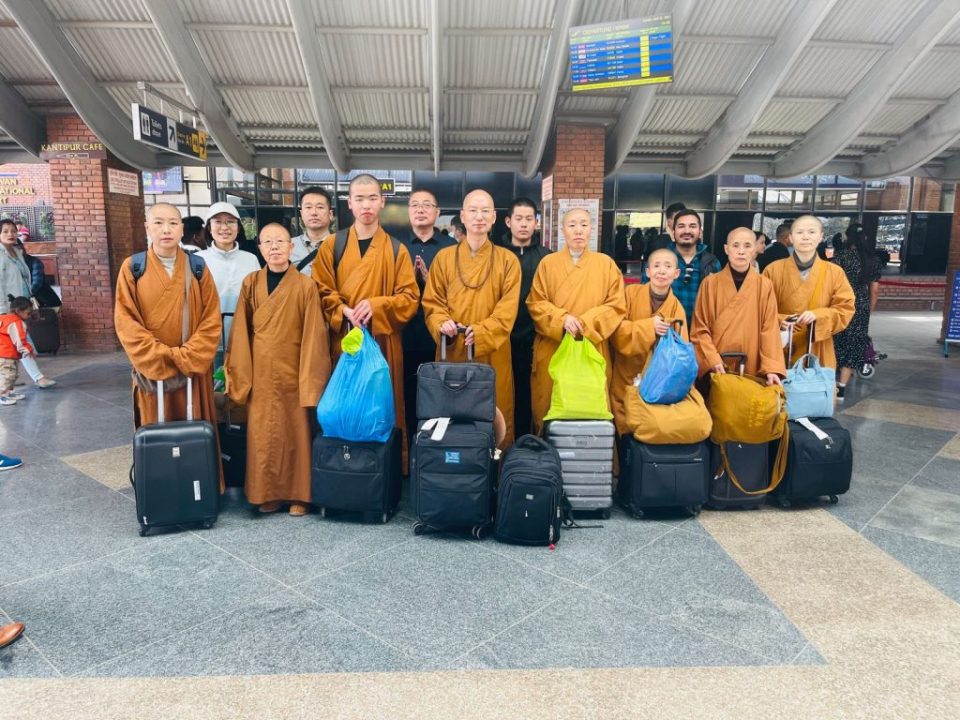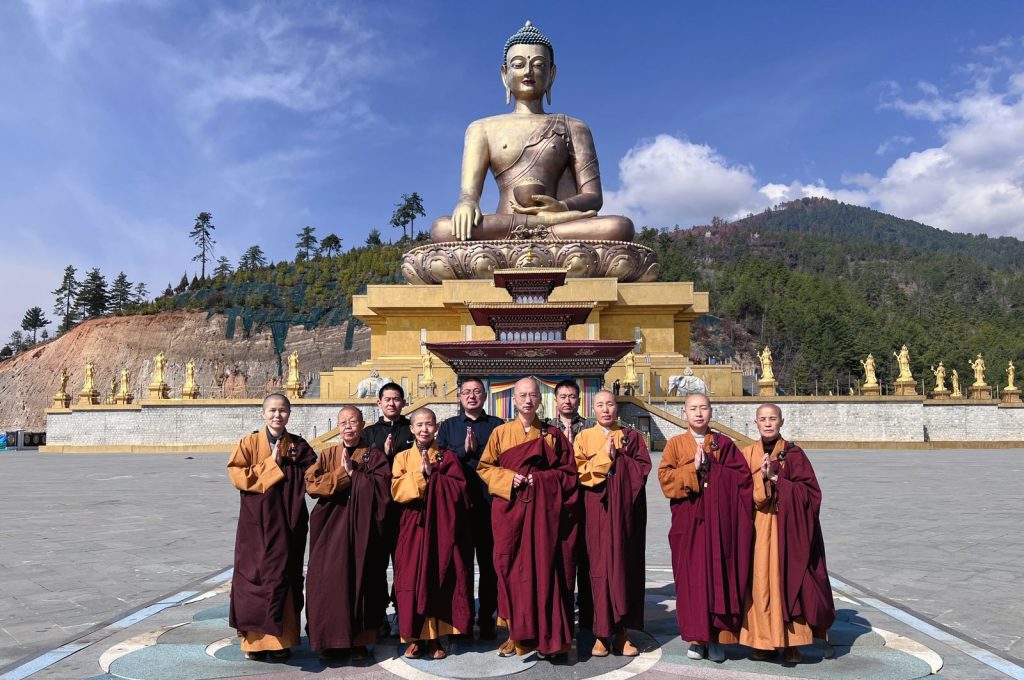Pikey Trek -10 Days
Trip Introduction
Pikey trek is a relatively new trekking path in the Solukhumbu region that encourages us to visit the Everest and Lower Khumbu regions while passing through spectacular scenery. It is a chance to visit several Buddhist structures such as gompas and stupas. Its dawn and sunset views are popular and you may appreciate the wonderful views of the Himalayas. The mountain range of Everest, Kanchenjunga, Makalu and Lhotse are great to be enjoyed.
Our adventure begins with a magnificent flight from Kathmandu to Phalphu, and continues through Junbesi, Lamjura Hill, Pikey Peak, and Phalphu. The newly opened path. The paths lead to a large area of classic Buddhist culture. The trek not only gives the finest views, but also the native Sherpa cultural experience.
Exploring a tiny farming town of Sherpas may be a good blend of nature and culture discovery, including the well painted Buddhist monasteries, and the rhododendron forest. With a night in a local Sherpa house, you will involve in local culture. The monastery of Thupten Choling is an amazing visit. The Pikey Peak walk to Phurteng is comfortable. It is appropriate for anyone who like to experience the world’s tallest peak, Mount Everest and the rough Everest.
Trips Facts
| Country | Nepal |
| Region | Everest |
| Highest Altitude | 4065m/ 13340ft |
| Duration | 11 Days |
| Grade | Moderate |
| Best season | Mar, Apr, May, Sep, Oct, Nov |
| Accommodation | Hotel, Lodge and Tea house |
| Meals | Breakfast, Lunch, Dinner |
Trip Highlights
- Have a beautiful flight from Kathmandu to Phalphu.
- Explore Thupten Choling, a well-known Buddhist monastery where Rinpoche first stayed.
- Admire the most spectacular views of the world’s tallest peaks, including Mt. Everest, Mt. Ama Dablam, and Mt. Lhotse.
- Enjoy the beautiful sunrise and the sunset view.
- Discover the lower Everest region.
Is This Trek Appropriate for you?
- The Pikey Trek is the Moderate Trek. You can easily complete this trek if you are physically and mentally prepared and willing to do so.
- You will be Trekking for 6 Days. The Path can be Completed in as little as 3 hours as much as 7hours.
- The walk is not tricky, there is no Climbing or Scrambling but the path is rocky and hilly.
- Each day you will cover 200 to 400 meters in height while trekking. The highest point in the trek you will reach on the trek is 4, 065m.
- The weather and Remoteness of this trek, as well as dealing with the high altitude, require a slow pace and the need to stay hydrated.
Itinerary
| Days | Activities | Durations |
| Arrival at TIA Kathmandu (1,400m/ 4,593ft) | ||
| Drive to Dhap (2,800m/ 9,190ft) | 6-7 hrs | |
| Trek from Dhap to Japre (2,920m/ 9,580ft) | 4-5 hrs | |
| Trek from Japre to pikey base camp (3,640m/ 11,942ft) | 6-7 hrs | |
| Trek from Pikey base camp to Pikey summit (4,065m/ 13,336ft) to Loding. | 8-9 hrs | |
| Trek from Loding to Junbesi (2,700m/ 8,860ft) | 4-5 hrs | |
| Trek from Junbesi to Taksindu (2,960m/ 9,711ft) | 5-6 hrs | |
| Trek from Taksindu to Phalphu (2,459m/ 8,067ft) | 5-6 hrs | |
| Fly from Phalphu to Kathmandu (1400m/ 4,593ft) | 30-40mins | |
| Departure |
Itinerary
Departure from : Kathmandu, Nepal
Arrival On : Kathmandu, Nepal
Day 1
Arrival at TIA Kathmandu
Arriving at Kathmandu International Airport You’ll be welcomed by a warm greeting. Our representative takes you to your hotel from the airport. Check in and arrive at the hotel. Our guide will meet you at night and will give you a short description of the trip. Dinner and overnight at the hotel.
Day 2
Drive to Dhap
After the breakfast, the day will begin with a long 8- to 9-hour journey from Kathmandu to Dhap. Dhap is located 230 kilometers away from Kathmandu Valley. If the journey begins at 6 a.m., one can get at Nepal Thok in time for lunch. You will be travelling to the Dhap through private jeep. Dinner and Overnight at the Lodge.
Day 3
Trek from Dhap to Japre
After breakfast, our trek from Dhap to Japre begins. As we approach closer to Sigane, you’ll notice mountains that you’ll grow to know well; they are the peaks of the Numbur Himal region of the Himalayan Range.
The first settlement is known as Japre. It’s located above a deep valley, with views of Mount Everest and the Numbur Himal. This is your first stop on the trek, and there is a monastery and a stupa here. Dinner and Overnight stay at the Lodge
Day 4
Trek from Japre to Pikey base camp
We leave for the pikey base camp today after breakfast. Then move over to the Bulbhule grassy hillside. We take right side for the Pikey Peak. The views of the mountains of Everest from here seem fantastic. You will be enjoying the view throughout the way. You will be walking for around 6-7 hours. Dinner and Overnight stay at the Lodge.
Day 5
Trek from Pikey base camp to Pikey Peak summit to Loding
Wake up early in the morning to have the fantastic views and start the trek from behind the tea house. The route begins with a slow slope. The winter weather of Pikey Peak is chilly and part of the snow covers the route. It’s usually, though, a simple climbing respite. You follow the hillside from the top of Pikey Peak that starts level and then gets steep as you go into the forest to Jase Bhanjyang for breakfast. You will walk after breakfast back to Loding, which crosses difficult areas in the forest. Dinner and Overnight stay at the Lodge.
Day 6
Trek from Loding to Junbesi
The day will begin by going down the slope to Jase Bhanjyang for breakfast. There are several ways to go to Junbesi from there. The most probably is a magnificent shortcut, leaving the hill immediately after Jase and sharply descending to Taktor through the beautiful forest of the old growth. This road meets the trek from Jiri to the Everest Base Camp. The lodge is a bit developed from here. It is many hours from Taktor on a beautiful Junbesi path. Junbesi is a traditional town, and is a home of Sherpa architecture and culture. Sherpa is a traditional settlement. The Sherpas believe a sacred valley to be the Solukhumbu. There are several monasteries of Buddhism along the road in this isolated area of Nepal which borders Tibet. Dinner and overnight stay at the lodge.
Day 7
Trek from Junbesi to Taksindu
After the breakfast, we’re going to take the trek for Taksindu this morning. Cross the river at the bottom of the city and hike up the forest to Salung, from which we can see the weather of Mount Everest and Makalu. Continue along the path and down to a river before climbing into Ringmo, which is known for its apple orchards and unusual apples including alcohols apples, cider and apple pie. A short last rise to Taksindu La from here, where you get again a magnificent perspective of the mountains, and a little downhill to the monastery in Taksindu and you’re lodging. Dinner and Overnight at the Lodge.
Day 8
Trek from Taksindu to Phalphu
After breakfast today, leave the main trek again and walk through the woodland along a lovely trail down to Phaplu. The possibility to go up to the Chiwong Gompa, situated on the rock overlooking the valley is also available. the monastery offers beautiful festivals like the Mani Rimdu festival. Continue to Phaplu to celebrate a fantastic trip to your comfortable accommodation.
Day 9
Fly from Phalphu to Kathmandu
Having breakfast with a breath-taking view We’ll take a flight from Phalphu to Kathmandu. Taking in the amazing scenery of the region. After about 30-40 minutes of flight time. You will be transported to your hotel when we arrive in Kathmandu. You have the entire day to do anything you want with it, whether it’s shopping or wandering around Kathmandu. Dinner and Overnight stay at the hotel.
Day 10
Departure
Today you will be leaving for your home. Our representative will drop you at the airport three hours before your flight’s departure time.
Route Map
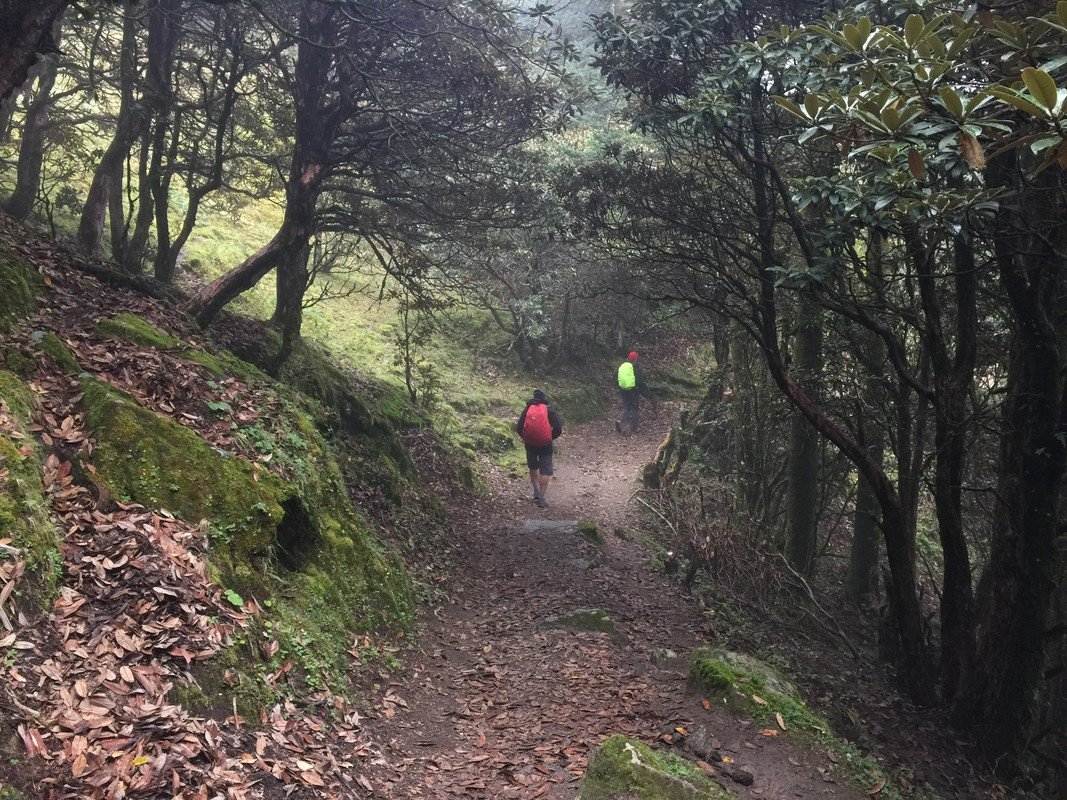
Altitude Map
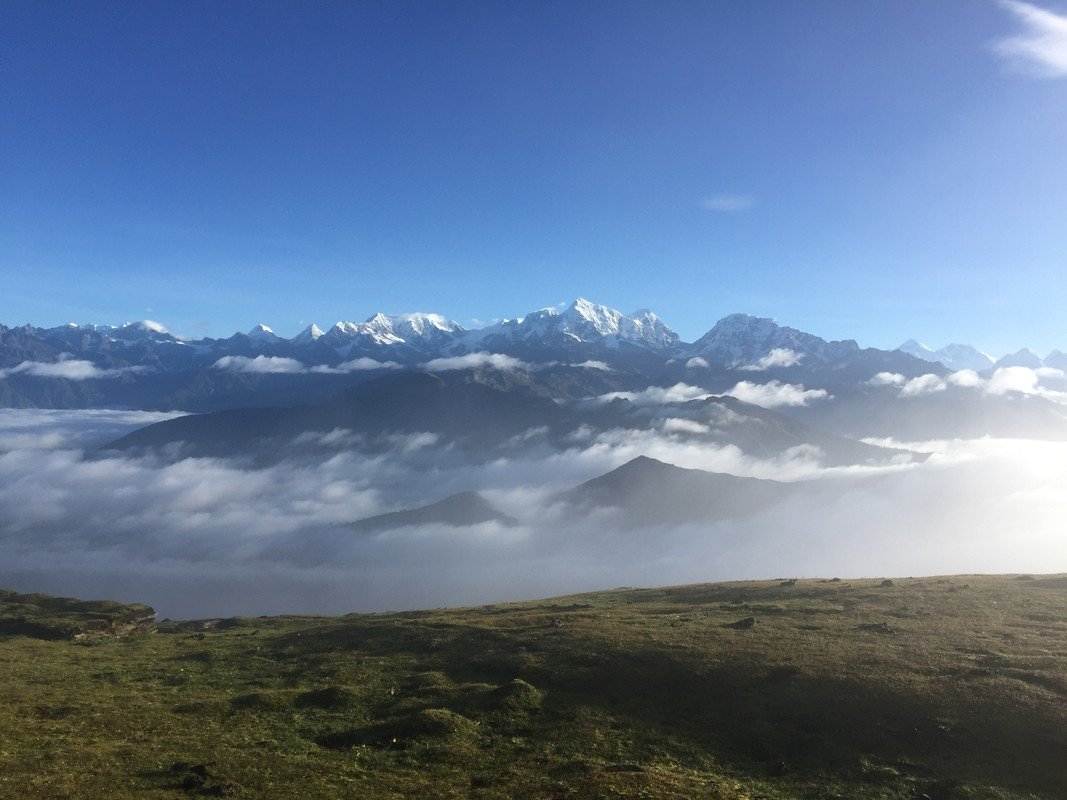
What's Included
- Arrival & Departure: Airport – Hotel transfer – Airport (Pick Up and Drop).
- Hotel Accommodation in Kathmandu: 2nights at Star categories hotel on Twin sharing and BB basis.
- Welcome Dinner and farewell dinner at Nepali culture restaurant in Kathmandu.
- Food & Lodging: 3 meals a day (BLD; including tea and coffee) along with accessible accommodation sharing at Hotel/Lodge during the trek.
- Permit: All necessary paper works: Sagarmatha National Park permit, TIMS Cards & Khumbu Rural Municipality entry fee.
- All government and local taxes if necessary.
- Trekking Map: Everest Region Trekking map.
- Member transportation: – Road transportation: Drive from Kathmandu to Dhap and Air Transportation: (Domestic Flight) Fly from Phalphu-Kathmandu.
- Insurance: Insurance for all involved Nepalese staff during the trek.
- Drinking: 2 liters of boiled water to carry on thermos per day per member.
- Guide: Government licensed Guide (English speaking) during the trek
- Porter: Porters (2 trekkers: 1 porter) up to 15kg during the trek.
- Insurance of guide and potter.
- Comprehensive Medical kit.
What's Not Included
- Air Fare: International flight airfare (from and to Kathmandu).
- Nepal entry visa fee.
- Extra night in Kathmandu: Extra nights’ accommodation in Kathmandu. In case of early arrival or late departure, early return from Trekking (due to any reason) than the scheduled itinerary.
- Personal Insurance: Travel and high-altitude insurance, Accident, Helicopter medical & emergency evacuation. *Mandatory
- Personal Expenses: Telephone calls, Internet, Toiletries, battery recharge, hot shower, laundry, soft drinks, beer, and any alcoholic beverages.
- Personal Equipment: Clothing, Packing Items or Bags, Personal Medical Kit, Personal Trekking equipment.
- Rescue Evacuation: Medical and emergency rescue evacuation costs if required. (Rescue, Repatriation, Helicopter, Medication, Medical Tests and Hospitalization costs).
Equipment List
What to bring ?
General
Tailor Your Holiday
Everyone has their own preferences in terms of destination, journey time, and budget. As a result, sticking to our plan isn't necessary. We will create a personalized itinerary for you that includes accommodations, transportation, meals, and tour guides. We guarantee you the best Tailor-made Package because this is your trip. You have the option to personalize it, as your liking. Let us Plan together to make your Vacation worth it.
Fixed Departure
Why Travel With Us?
Secure Online Payment, No Credit Card Fee
Travel with Locals. Support Locals
Lifetime Deposit
Private & Tailor-Made Trips
24/7 International Support
Support Local Communities & Donate to Charity
All Inclusive Price
Secure Online Payment, No Credit Card Fee
The ideal season to travel
January:
Nepal’s trekking off-season is in full effect in January, with low tourist numbers across the nation. The spectacular views and the fact that you’ll have the trails to yourself make this a surprisingly fantastic time to walk across the trails if you’re prepared for chilly temperatures.
February:
While much of Nepal remains freezing in early February, the temperature begins to rise later in the month. The mountains are still cold, and there will be snow, but winter is coming to an end.
March:
March marks the start of spring, one of Nepal’s two high seasons. While temperatures in the mountains will likely remain chilly, and snow will likely remain in certain areas, pathways will begin to soften. In March, trekkers returned in greater numbers, and there are numerous reasons for this. While March isn’t as crowded as April. Crimson rhododendrons can be seen in March month.
April:
April, as of March, is a popular trekking month in Nepal. The monsoon rains are still some weeks away, and temperatures are normally pleasant or at least not too chilly in the high Himalayas. In April, temperatures in the Himalayas are still cooler. At higher elevations, temperatures will be cooler.
May:
May marks the beginning of the Everest climbing season, as weather conditions on the mountain are most ideal at this time of year, although these conditions are very different from what normal trekkers will find at lower altitudes. Although the number of trekkers in Nepal decreases in May as humidity and temperatures rise in preparation for the monsoon season. For nature lovers, May and June is the best time to trek.
June:
By mid-June, monsoon rains had arrived, and most trekkers had left the paths. The conclusion of the Everest-climbing season normally occurs in the first half of the month. However, even once the rains begin, it hardly ever rains all day every day, so if you’re prepared for rainy weather and understand that humidity and rain clouds may hamper your views, June isn’t a bad month to trek in the Everest Region. Furthermore, the higher you climb in height, the less probable it is that it will rain.
July:
In July, Nepal’s high rainfall keeps most trekkers off the trails. However, individuals who are well-prepared with good rain gear and are willing to accept some potential travel delays can still enjoy their trek. The further you travel into the mountains, the cooler it gets and the less rain you get, however, it will almost surely pour at lower elevations. There’s also a danger of mudslides and landslides disrupting hiking trails.
August:
The monsoon season in Nepal begins in mid-June and lasts until mid-September. In July and August, the Everest Region, like the rest of the country, receives the most yearly rainfall. It also has the hottest temperatures. The higher you go into the mountains, the cooler it gets and the less rain there is. In August, there’s also a danger that landslides would close hiking routes and make paths muddy.
September:
By mid-to-late September, the monsoon rains will have passed, and the weather will be suitable for trekking in Nepal once more. Even though excessive humidity may hide some mountain views, there’s still a possibility to see amazing views early in the morning. In addition, in September, the popular Everest region trek is less crowded than later in the autumn season.
October:
The month of October is the busiest for trekkers in Nepal. The weather is quite stable, with a clean, rain-free sky providing superb mountain views. However, crowds are at an all-time high, with the Everest region Trek being the most popular in the country. When visiting the Everest region in October, it is critical to plan properly far ahead as possible.
November:
In November, there is extremely little possibility of rain in the Everest region—it is the driest month of the year. This means that humidity is at an all-time low, and the chances of seeing clear mountain views are greater than at any other time of year. Temperatures are a few degrees lower than they were in October, with a low of 26°F (-3°C). Temperatures will be even cooler at higher elevations. However, given the low chance of rain and clear skies, November is the greatest month of the year to hike to Everest in terms of weather.
December:
As winter approaches, the trekking trails become empty except for the most courageous adventurers. However, if you’re properly equipped for cold temperatures, December is a great season to walk to the Everest region. The weather in December isn’t quite as freezing as it is in January, but the difference isn’t significant. This month, the average high in Namche Bazaar is 44°F (7°C), while the average low is 21°F (-6°C). Because Namche is only 11,290 feet (3,440 meters) above sea level, temperatures will be much cooler higher up.
Flight to Phaplu
- Almost every trip begins with a flight from Kathmandu to Phaplu Airport. As it is the easiest way for your trek to the Dudh Kunda.
- Kathmandu is 123 kilometers from Phalphu Airport. The domestic airport of Phalphu is located in Solududh Kunda, Phalphu.
- The airport is located at a height of 2,413 meters above sea level. It only has one runway.
- It’s close to Lukla Airport’s approach. It serves as the entry point to the lower Solukhumbu area.
- The flying time is around 30 minutes. During the monsoon season, flights are frequently delayed or canceled.
Altitude sickness
Beyond 2500m, altitude sickness is a sneaky monster that may attack even the fittest trekkers. These demands do everything in your power to prepare for altitude trekking and take things carefully throughout your Everest region journey. With rising altitude, the amount of breathable oxygen decreases, which is the primary cause of high-altitude sickness.
Your body requires time to adjust to thin air, so start at a lower altitude and work your way up. Some of the signs and symptoms of Altitude sickness are:
- Increased breathing.
- Increased urination.
- Restless sleep.
- Periodic breathing at night because of altitude.
- Dehydration.
- Shortness of breath.
- Extreme fatigue.
- Respiratory failure.
- Cerebral edema.
- Coma.
Certain care should be made to ensure that the situation does not worsen. However, if the symptoms worsen, you may need to return to a lower height and seek medical help. There are, however, several other precautions you may take to reduce your risk of altitude sickness while trekking in the Everest region.
- Trekkers can modify their bodies by slowly and gradually climbing, as our bodies require time to adjust to the oxygen level. For high altitude trekking, at least one day of acclimatization rest is essential, and you should ascend as high as possible before returning to a lower altitude for the night.
- You should do various strength training exercises such as running, cycling, jogging, push-ups, and going to the gym to acquire strength and stamina for your adventure.
- As the air gets increasingly thin, an increase in elevation reduces oxygen levels, and in the Everest region trek, an increase in altitude also means less vegetation. The consumption of alcoholic beverages, cigarettes, and tobacco decreases the body’s water content.
- The greatest remedy is to always stay hydrated. On your walk, instead of drinking cooled water, drink warm water.
- Diamox is the most effective altitude sickness medication; thus, you should bring a subscription with you on the trek. However, you should consult with your physician to see whether it is advantageous.
Things to know about Everest region
Drinking-Water
Especially for trekkers, it is very necessary to hydrate your body at a higher altitude than in lower elevations to avoid dehydration and altitude sickness. Lack of fluid can be the main hindrance during the trek. You should hydrate your body with at least 3-4 liters of water daily (Tea, soup, or normal drinking water). Throughout the trek, you will come across tap and spring water, but it is not safe to drink without purifying it. You can buy the plastic bottle water in the teahouses but becomes expensive as you climb in the higher altitude, and it pollutes the local ecosystem, therefore we recommend you to use a Reusable water bottle or water pouch favorable for both hot and cold water.
Throughout this trek, Coldwater is free of cost in teahouses, however for boiled water they charge you between 0.5- 0.10$ per liter. As you gain height, the price of a sealed water bottle rises to 2-3$ per liter.
Here are some ways that you can use to make the water drinkable.
- Boiled water
Boiling water is the best way to purify the water. As we are climbing to a higher altitude you need to boil the water for about 3-minute and season it with a pinch of salt before drinking. The Teahouse provide free cold water, however, heated water cost between 0.5- 0.10$ per liter.
- Purification tablets or electrolyte powder.
Purification tablets like chlorine or iodine tablets are commonly used tablets by trekkers to disinfect the water. 1 tablet is enough for a liter of water. It takes around 30 min for the tablets to dissolve and become drinkable. Water, purified by tablets may leave a taste in your mouth.
Electrolyte powder is another option. Electrolyte powder is a better way to purify water than tablets because electrolyte powder contains minerals such as salt, Potassium, Magnesium, which are important for your body during the trek.
- UV Light water purifier/ SteriPEN.
It is a simple, effective, economic, and environment-friendly way to purify water. It kills the bacteria and virus within 10 sec by exposing them to ultraviolet light using Steripen, without changing the flavor of the water. This is a highly recommended method of purifying water.
Trek Essential Backpack items for Pikey Peak
The bag of a trekker also reveals the trekker’s level of experience. A good trekker should be a smart backpacker. You should be pre-prepared for the things that you need in the trek.
Here are some of the things that you need to take with you for the trek.
Travel documents
- Airline tickets with the itinerary.
- Travel insurance policy documents.
- Valid passport.
- Copies of passport.
- Passport-sized photos.
- Nepalese cash.
- Travel permits.
Clothing
- A pair of waterproof trekking shoes or hiking boots.
- A pair of flip flop slippers or running shoes.
- 2 sets of thermals (leggings and tops)
- 3-4 pairs of hiking long sleeve shirts or tops.
- Pairs of hiking shorts and pants or.
- Fleece jumpers or a set of tracksuits.
- Good quality windproof down jacket.
- Lightweight waterproof rain jacket and pants.
- Neck gaiter, leg warmer, and packet of pocket hand warmers.
- 4-5 pairs of quick-dry socks, underwear, sports bra.
- Pair of inner and outer gloves (for winter).
- Knitted Hat, sun cap, beanie, or bandana.
- Sunglasses or eyeshade.
Trekking equipment
- Waterproof trekking bag of 40-50liter and a Rucksack or duffel bag (if your backpack is not enough for all your item and need a potter).
- Reusable water bottle (both hot and cold) of at least 1-2litre.
- A sleeping bag and sleeping bag liner.
- Trekking stick/ poles
- Crampons (if you are trekking in the Winter season, Jan-Feb).
- LED Headtorch or solar lamp (LuminAID Lamp)
- Stuff sacks, plastic bags.
- Plug adapter, Charging appliances, power bank, batteries.
- Pocket knife.
- Travel Wallet.
Toiletries
- Rolls of Toilet paper, wet wipes, and tissue.
- Medium-sized quick-drying towel.
- Toothbrush and toothpaste.
- Hand sanitizer.
- Sunscreen, lip balm, body lotions.
- Deodorants.
- Portable mirror.
- Shampoo and soap.
Personal First Aid Kit
- Antibiotics
- Painkillers, Paracetamol, ibuprofen, aspirin, Nicole
- Sanitary pads
- Bandage.
- Anti-inflammatory spray.
- Anti-Nausea tablets.
- Anti-diarrhea pills or power.
- Altitude sickness tablets.
- Water purifying tablets or electrolyte powder.
- Mosquito and Insect Repellent
- Salt or anti-leech oil (If traveling in the rainy season, July- Aug).
- Earplugs
You can buy or hire trekking clothes and equipment in Kathmandu. If you are buying it, you have to allow an extra day for shopping; however, if you are hiring it, you must inform us in advance so that we can arrange it before you arrive in Kathmandu. This way you can reduce the weight of your luggage and save time and money.
Branded trekking clothes and equipment are available around the Thamel area at a reasonable price.
Note– Kathmandu- Lukla flight has a luggage allowance of 15 – 20 kg per person. For extra baggage, they charge 2$ – 3$ per kg. So, you can wear your trekking boots and jacket to reduce the weight. Have a hand carry bag for your passport, money, medicine, and a pair of clothing.
Accommodation, Meal, and Transportation
Accommodation
We will accommodate in star hotel during our stay in Kathmandu and Dhap. Afterward, we will be staying in lodges.
Meal
During the trek, we will provide you three-time meals. You can choose from the given menu.
Breakfast– French toast, Cornflakes, Cereal, Pancakes, Bread butter, Eggs, Oatmeal, Porridge, Tea, etc.
Lunch– Dal Bhat (Rice, vegetable curry, meat curry, Lentils, Tomato Chutney, Salad, Papad) Vegetable noodle soup, Chicken noodles soup, Garlic soup, Fried noodles, Fried rice, Thukpa, Fried potato, Mo: Mo, etc.
Dinner– Dal Bhat (Rice, vegetable curry, meat curry, Lentils, Tomato Chutney, Salad, Papad) Vegetable noodle soup, Chicken noodles soup, Garlic soup, Fried noodles, Fried rice, Thukpa, Fried potato, Mo: Mo, etc.
Besides these, there are a variety of other options of food. You can buy it from your pocket.
Transportation
By Bus- From Kathmandu airport to hotel at Kathmandu and vice-versa.
From Kathmandu to Dhap by jeep.
By Air- Flight to Nepal.
Flight from Phalphu to Kathmandu.
Guide and Staff Arrangements
Throughout the trek, all your activities will be handled by our well-qualified and professional staff. We will do all the escorting. We are providing you with a highly experienced and licensed local Sherpa guide with fluent English speaking and has excellent communication skills. We will accompany you from Kathmandu and guide you to Pikey Peak. Each group of 4-5 trekkers will be assigned an assistant guide, as well as a porter for two trekkers (2*15kg =30kg). If your luggage weighs more than 15kg you will be provided a porter individually but you will be charged for 2 people.
All our lead guides, assistant guides, and potters are well professional and experienced. So, we hope for your respect and cooperation with us throughout the trek.
A typical day on the Pikey Peak Trek.
Every day will begin with the ringing of your alarm clock at 6 a.m. and a knock on your door from your guide with the invitation of breakfast. Get up, have breakfast, pack your backpack and get ready to start your day’s walk by 7 a.m.
You’ll walk along the trail enjoying the scenery, clicking photos, creating memories, passing by other travelers, interacting with your guide, hearing each other’s stories. Lunch will be served at a local teahouse in the late afternoon (1-2 am). Having lunch and an hour of rest, we will proceed to the day’s final destination as per the itinerary.
On arrival at the destination, check into your accommodation. Get freshen up and some rest. As every teahouse where we stay has a large common dining area with a wood-burning stove in the center, there you will get to meet many travelers. You can sit there, laugh at each other stories, play cards, sing songs, play music, and have a good time. This will help you forget all the tiredness of the day. Later in the evening, you will have your dinner together. After dinner, your guide will give a short briefing about the next day’s trek regarding when you must get up when we have to start our trek the next day, where we will stay the next day, how many hours we have to walk, and so on.
During this trip, you will walk for a least 5 hours and a maximum of 7 hours. During this trek, you will get to see the 8 highest mountains in the world. You will be experiencing the authentic Sherpa, Tamang, and Gurung lifestyles. Your hard walk will be paid off on reaching the final destination with lifelong memories.
Nepal Tourist Visa and permits details
Visa procedure.
To travel to Nepal, you’ll need a tourist visa that is valid for the period of your stay in Nepal. Better, if you have a tourist visa valid for at least 2 months because anything can happen during the trip, and staying in Nepal after your visa expires would result in you paying a penalty. Apply for a visa at your nearest Embassy of Nepal or obtain an On-Arrival visa at immigration in Tribhuvan International Airport, Kathmandu. But it’s better to contact your nearest Nepalese Embassy.
Here are the documents that you need, to apply for the tourist visa.
- The Tourist Visa Application Form for Nepal (Fully completed online and printed)
- Original Passport with at least 2 blank pages and validity of at least 6 months.
- Photocopies of your passport’s information page.
- At least 2 recent passport-sized photos of yourself with white background.
- Proof of accommodation in Nepal.
- Valid travel and return flight tickets.
- A bank statement from the last 3 months with a minimum closing balance of NPR2,00,000.
- Receipt of the visa fee for Nepal.
Note: Our trip is for 10 days so apply for 15 days tourist visa, which costs USD 30.
Entry permits and Requirements
The Entry permits that you need for the trekking in the Everest region are;
| Trekking permits | Foreign Nationals | SAARC nationals | Nepali Citizens | |
| 1 | Khumbu Pasang Lhamu Rural Municipality Entrance Permit | NPR 2,000 per person (for the first 4 weeks)
NPR 2,500 per person (beyond 4 weeks) |
NPR 2,000 per person (for the first 4 weeks)
NPR 2,500 per person (beyond 4 weeks) |
NPR 2,000 per person (for the first 4 weeks)
NPR 2,500 per person (beyond 4 weeks) |
| 2 | Sagarmatha National Park Permit | NPR 3,000 per person per entry + 13% vat.
(Approx. 34$) |
NPR 1,500 per person per entry +13% vat
(Approx. 15$) |
NPR 1,00 per person per entry +13% vat
(Approx. 1$) |
Note: A Khumbu Rural Municipality Entrance permit must be obtained from the Rural Municipality desk at the Lukla checkpoint.
Permits for the Sagarmatha National Park can be obtained from the Nepal Tourism Board in Bhirkuti Mandap, Kathmandu, and from the Sagarmatha National Park entrance gate at Monjo. To save time, we recommend that you obtain a Sagarmatha National Park Permit in Kathmandu.
For more information about Trekking Permit here is the link.
(If you are traveling from a travel/trekking agency your agency will arrange all the Permits.)
Documents required to get these Trekking permits.
- Complete the form with your passport details.
- Passport size photos.
- Photocopies of passport valid for at least 6 months.
For more information contact us.
Travel Insurance
During the journey, you may encounter several unexpected incidents or losses. Trekking in Nepal is an adventurous and occasionally dangerous activity, especially at high altitudes. Trekkers must have travel insurance before visiting Nepal for trekking. During this 10-days trek to Pikey Peak, you may encounter a physical injury, illness, or an unexpected accident, and you will be responsible for all medical expenses and losses.
You need to choose an insurance policy that covers all of your possible risks from the start of your journey to your final destination. The following threats should be covered by your travel insurance:
- Cancellation of Domestic and International flights.
- Lost and stolen baggage and passport.
- Hospital and Medical expenses (physical injury, Acute Mountain sickness, Altitude sickness, sudden accident)
- Emergency rescue such as Helicopter.
- All high-altitude trek dangers up to 5,600m.
You need to choose your travel insurance wisely so that, in the case of such an incident, your travel insurance will cover the costs.
You can get your travel insurance in either your home country of Nepal.
Responsible Travel
As the Everest region is not only the gateway to Mount Everest but also renowned for its traditional culture and eco-friendly environment. All travelers should travel responsibly in these regions. This region is inhabited by the majority of Sherpas, Tamang, Gurung, and Chhetri ethnic tribes You must respect the local people, their culture, religion and try to limit any harmful acts that will harm their culture and environment. We expect you to properly dispose of all the plastic waste (food warmers, plastic water bottles, etc.). On your way to Everest Base Camp, you may encounter any rare species (Lophophorus (Danfe), Wild bear, Red Panda, Crimson horned Pleasant, Ghorals, Tiger, Yak, and some other) and you should avoid disturbing them. When visiting monasteries, you must follow the monastery’s norms. Your responsible travel will help Nepal achieve long-term sustainable tourism.
Electricity and Internet facility at Everest region
Electricity facility.
Despite its difficult geography and weather challenges, the Everest region has been able to provide electricity and access to the Internet.
The lower Everest region is hydroelectrically powered; thus, you can enjoy free electricity. but some hotels might charge you 2.5$ to 3.5$ per battery per hour
Internet Facility and Service
Internet and network facility is needed to contact your family, friends, employee, to post updates and upload photos during the trek.
Everest link has been providing an internet service throughout the Everest region.
You can purchase an Everest Link WI-FI card at the lodges and use the Everest Link hotspots to connect to the internet anywhere on the path within Everest Region.
Cost of Everest Link WI-FI card:
-10GB= NRP 2000/ 17$
-20GB= NRP 3000/ 25$
(Valid for 30 days)
NCell and NTC cellular service has been providing the network as well as internet facilities in Everest Region. You can purchase the NCell or NTC sim card from the stores in Kathmandu for ~1$ that comes with some bonus calls, SMS, and a balance of Rs.50. For top-up either you can buy a recharge card or ask any cyber to top up your mobile. By taking data packages you can use the internet service from NCell and NTC throughout the trek.
NTC cellular service is most preferred over NCell. NTC provides good service and signal connectivity, in comparison to NCell.
| Buy NTC data package
Dial*1415# |
Cost of data package in NTC:
-14GB=7$ (Valid up to 28days -30GB=15$ (Valid up to 90 days) |
Check balance
Dial *1415# |
| Buy NCell data package
Dial *17123# and select. |
Cost of data package in NCell:
-15GB=10$ -25GB= 12$ (Valid up to 30 days) |
Check balance
Dial*101# |
Document needed to buy a sim card.
For foreigner = 1 passport size photo, Passport photocopy, or valid identity card.
For Nepali = 1 Passport size Photo, Photocopy of Citizenship, or driving license.
Some useful tips to reduce the use of electricity.
- Extra batteries for the camera.
- Power bank with 5000-10000mAh.
- The solar charger and solar lamp (Lumin Aid lamp).
- As possible less usage of a device with low brightness, GPS, and WI-FI off.
Pikey Trek -10 Days
Trip Reviews
Lorem ipsum dolor sit amet, consectetur adipisicing elit, sed do eiusmod tempor


